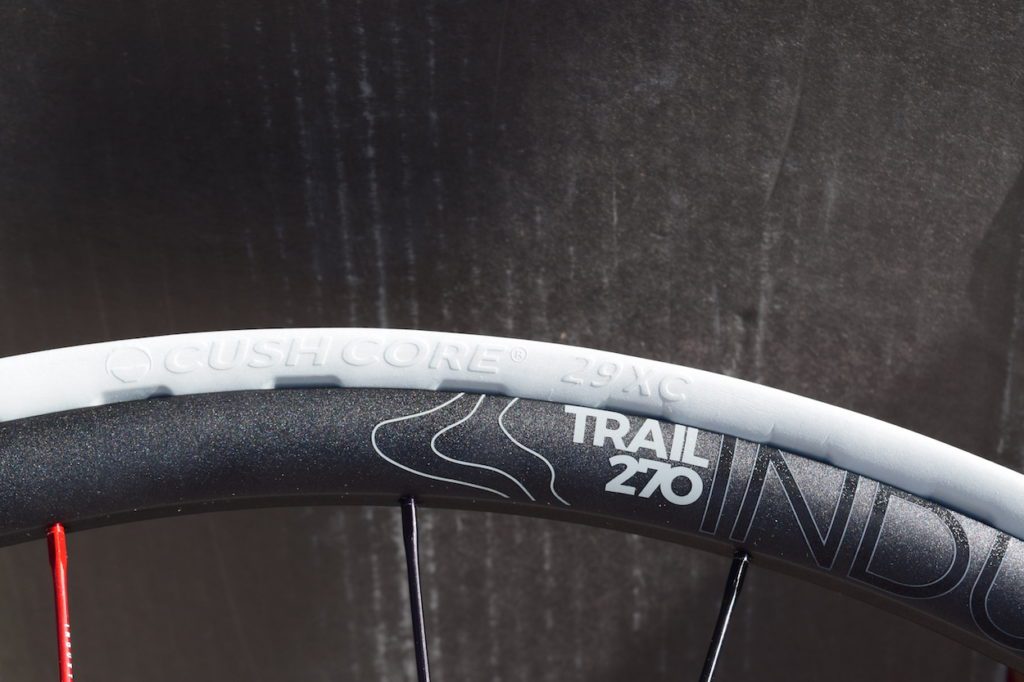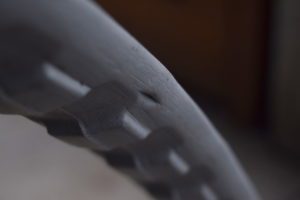How to fix a tubeless tire (when sealant alone won’t )
Salvage your tire without resorting to tubes
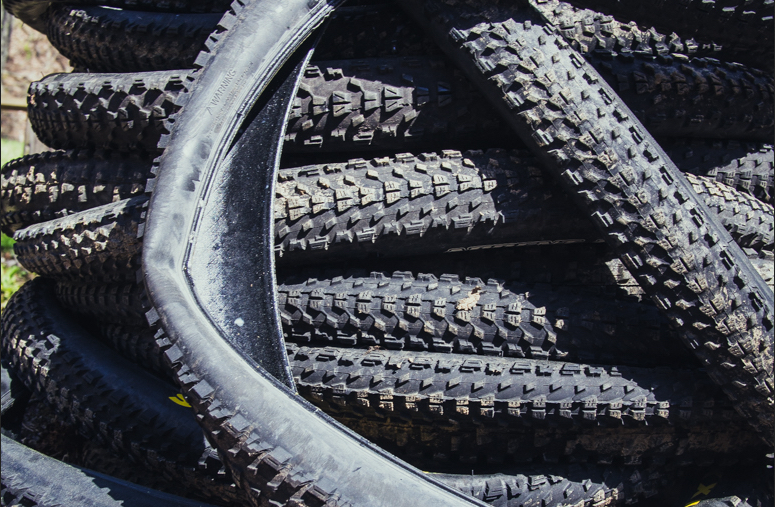
Tires are – like most other bike parts – in short supply this year. Even in normal times, a fresh set of treads can be pricey. Which makes getting a hole in one on your first ride a particularly painful experience.
But wait! You can fix your tire! That tiny pinch flat at the bead doesn’t have to be the end of your tire. And you’re not condemned to running tubes. There’s several ways to successfully fix the peskiest holes in your tubeless tire.
Tubeless tire technologies – and tubeless sealant – have come a long way. You can now expect that small punctures will be solved by sealant alone, even in lightweight xc or gravel tires. Still, sometimes a hole won’t stop leaking with tire goo alone. But that doesn’t mean your tire is garbage, or relegated to running tubes.
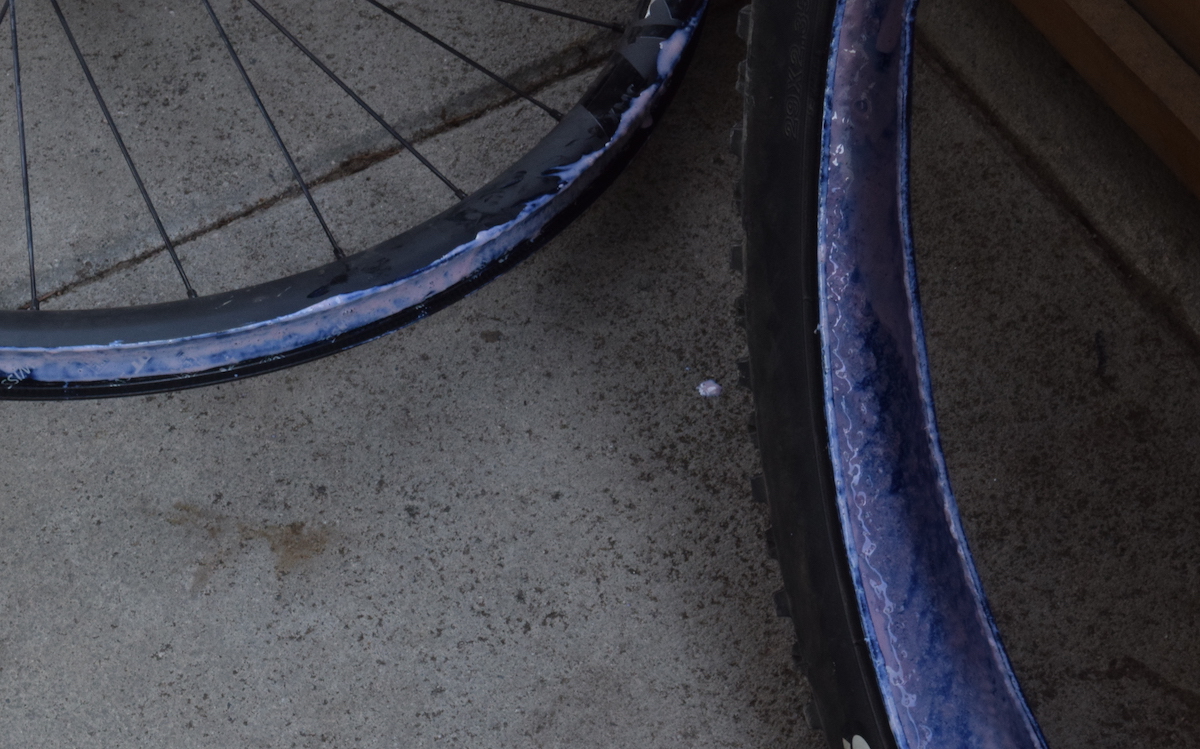
How to Fix a Tubeless Tire
We’re dividing this into two parts. Tricks you can try to save your ride, or get home safe. And more involved strategies to repair a tire once you’re back in the garage.
On the ride
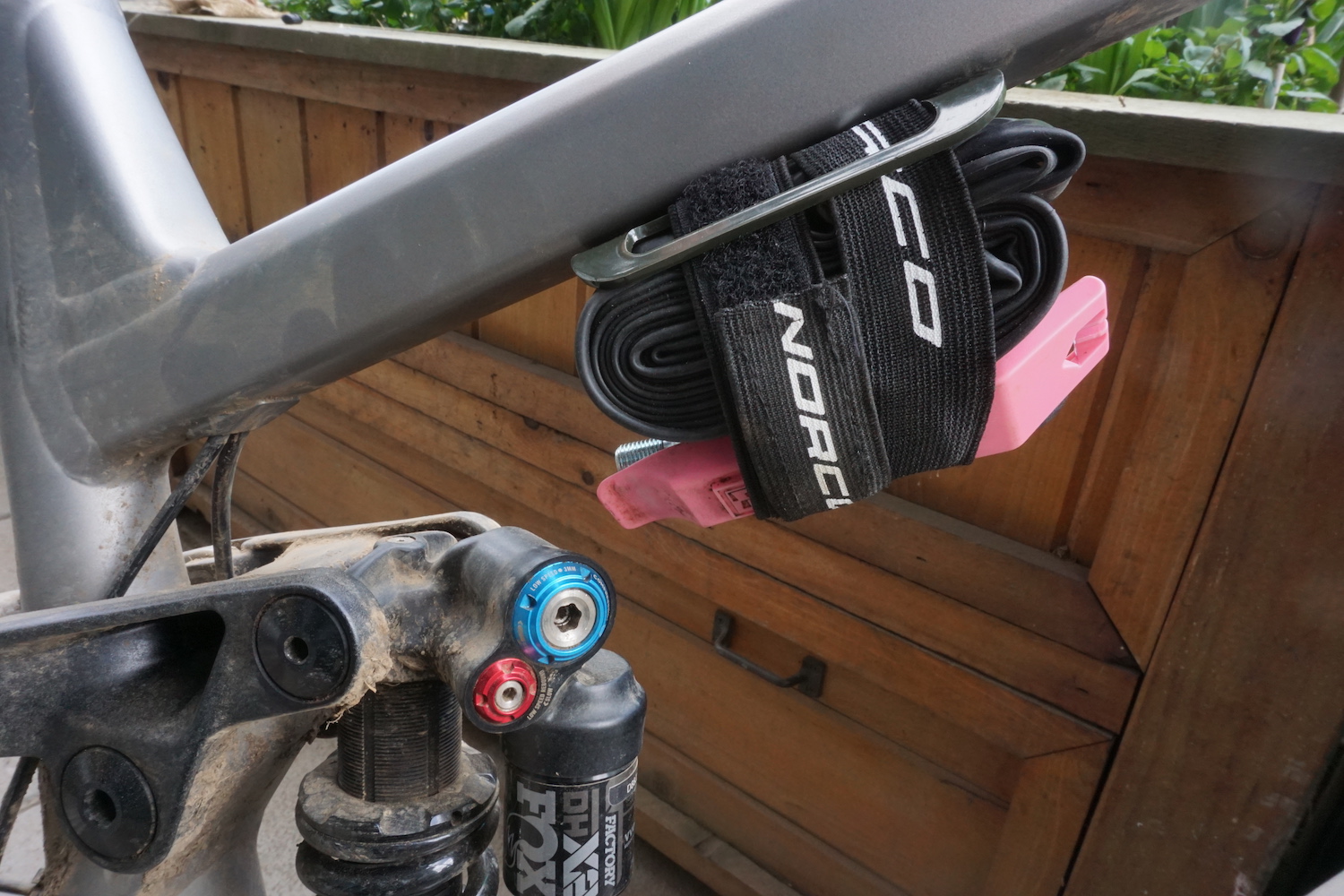
1) Be prepared
Always carry a tube and some sort of valve removal tool on rides. Murphy’s Law may not be scientifically proven, but I always seem to get flats when I’m least prepared to deal with them. After years of superstition, it is to the point where I bring a spare tube as much a good luck charm, warding off bad trail vibes, as a functional piece of kit. But it is also that. If you do get a hole that won’t seal, a tube will always get you home.
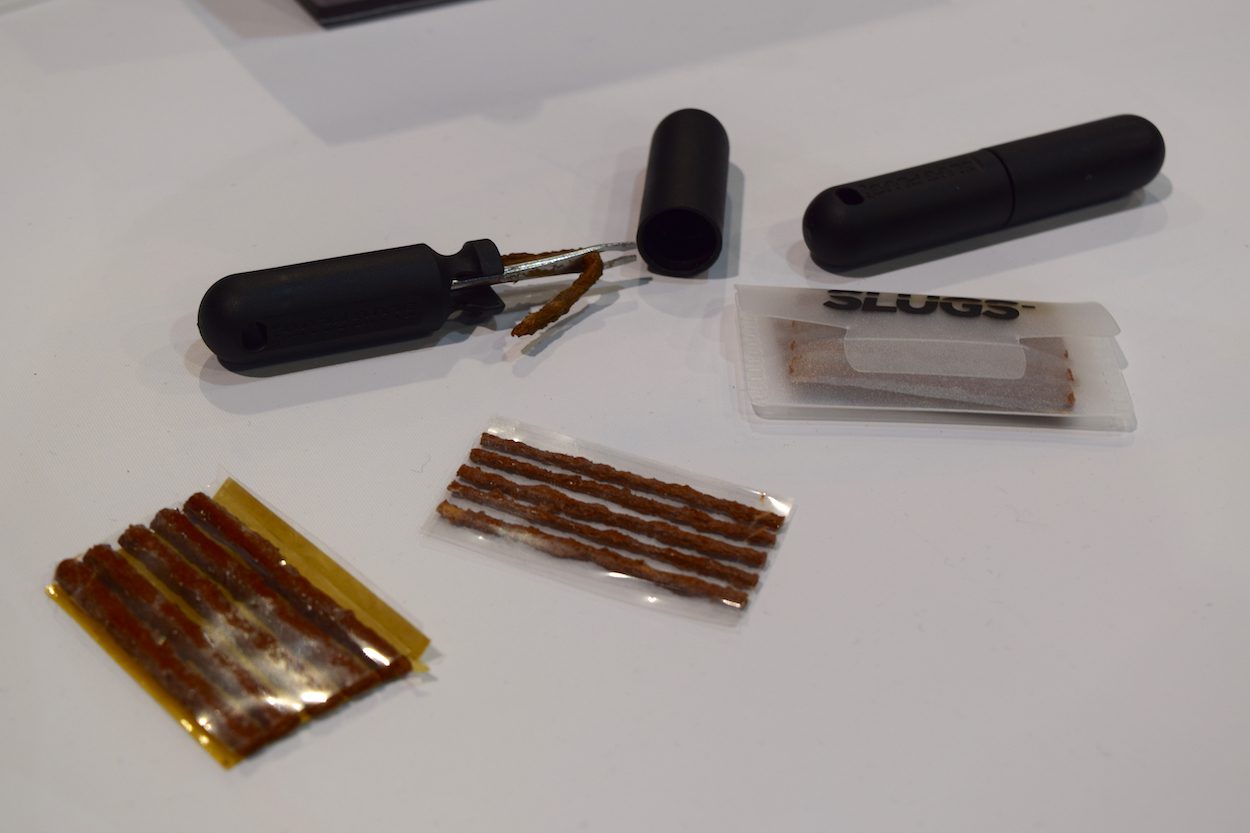
2) Tire plugs (a.k.a. “Trail Bacon”)
Tire plugs are borrowed from automotive tires, just downsized for mountain bikes. They work the same in both situations. A sticky plug wedges into the hole in your tire and, in concert with whatever brand of sealant you’re using, reseals your tire. Often, this is all you need. Bacon strips can last for a long time in your tire, or they will tear out every other ride. It can be a bit of luck of the draw. But they’re usually good to get you home.
3) Fabric “plugs”
Like trail bacon, a small square of loose fabric can seal holes too big for sealant alone. Push the fabric into the hole, trim excess, and off you go. Sometimes this takes a bit longer than plugs, so it might not be the best option mid-XC race. But, when it does seal, it tends to last longer. The fabric absorbs sealant inside the tire and, when that hardens, seems to function like a patch and can last for a long time. Plus, unlike trail bacon, it’s easy to size fabric to match the size of a puncture hole. Like bacon, there’s limits to how big of a puncture this will seal. Also, you don’t have to buy these, you can make fabric patches out of any leftover rags.
At Home Fixes
1) Glue tire patches
Just like repairing a tube, glue tire patches can work wonders on punctures to tubeless tires. This takes a bit more time, though as, depending where the puncture is, you may have to remove the tire. It obviously won’t work to slap a patch in the middle of your tire tread. But you can patch that same puncture on the inside. Just be sure to clean off any sealant and dry the surface around the puncture before applying the patch.
Note: Only the old-school, glue patches work. Not the glueless patches that come in some tire kits.
2) Shoe Goo and fabric tape
Any skateboarders – or ex-skateboarders reading this will already have a supply of Shoe Goo, and know that it can fix just about anything. For fixing a persistent puncture, paring Shoe Goo with a big of fabric tape makes a solid patch. Sort of like a combination of the trail bacon and fabric plugs, above, but in one super patch. Again, be sure the area you’re patching is clean and dry.
I’ve heard of other glues being used successfully, but don’t have personal experience. If you’re experimenting, be sure you’re using a strong glue and one that will stick to rubber. Not all will.
An ounce (or couple hundred grams) of prevention…
Not all of these fixes will work every time. Sometimes a hole is perfectly placed to ruin your tire. If you slice too many threads in the tire casing, it will loose too much sidewall support and feel weird.
The vast majority of flats can be fixed, though. But if you’re regularly sacrificing tires to the trail, there’s a few things you can try to prevent punctures in the first place.
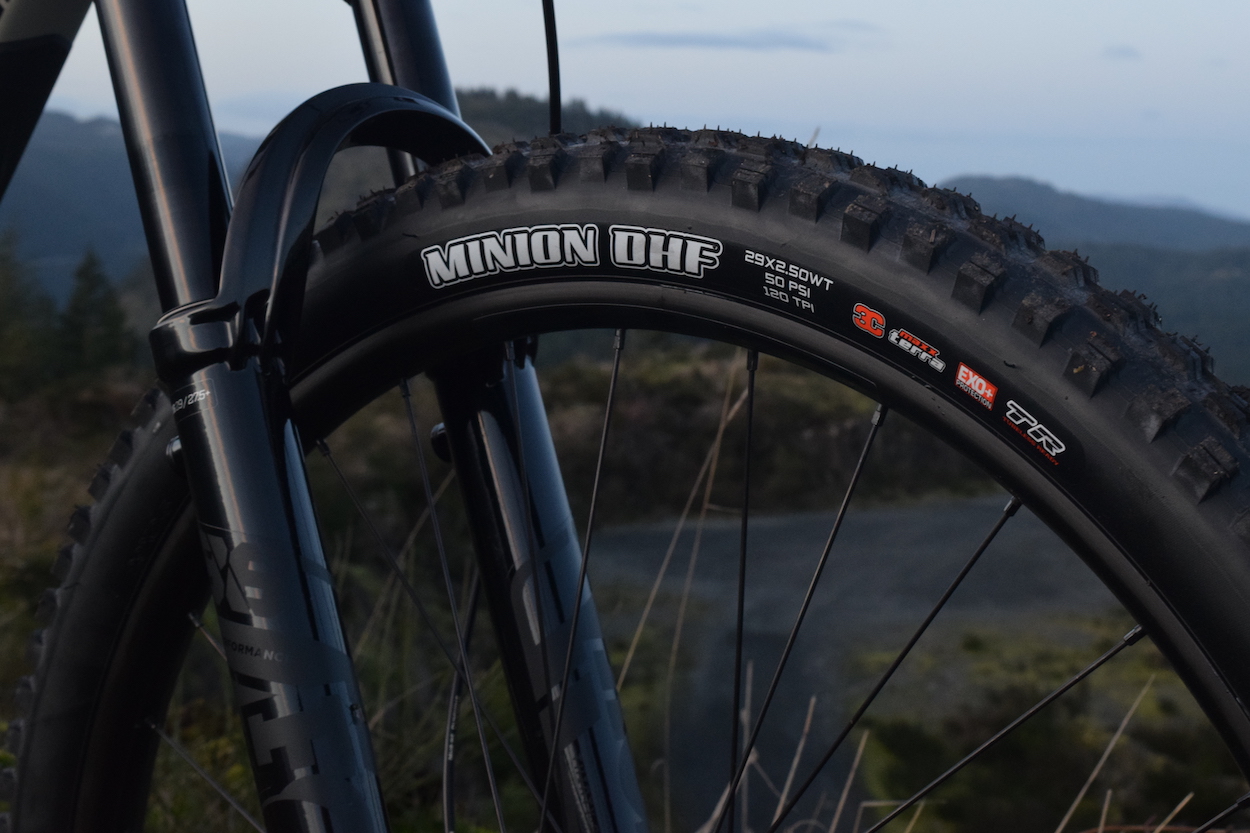
1) Heavier tire casings
Light tires feel fast, which is fun. But a heavier casing can prevent sidewall cuts or pinch flats. Most brands have several different levels of tire casing, using more layers and/or more durable materials. Some even have additional layers just for the sidewall. These add weight, but a heavy tire is faster than a flat tire, no?
2) Tire inserts
After some trial and error to start off with, there are several reliable options for tire inserts. You can get them for gravel, XC, downhill, and even fat bikes. Most help prevent flats – in part by adding a layer between the tire casing and the rim to help prevent pinch flats. Some also have performance benefits, like letting you run lower pressures for better traction. Most are also much easier to use now than in the early days. So, if you’ve let horror stories of trying to get inserts off rims scare you away, now could be the chance to try.

